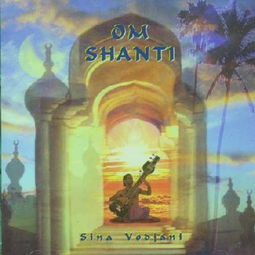Om Shanti: A Deep Dive into the Sacred Mantra
Have you ever wondered about the profound significance of the mantra “Om Shanti” in Sanskrit? This article delves into the various dimensions of this sacred phrase, exploring its origins, meanings, and its impact on spiritual practices. Get ready to embark on a journey that will leave you in awe of the power of this ancient mantra.
Origins of Om Shanti

The mantra “Om Shanti” is a combination of two powerful words in Sanskrit. “Om” is considered the universal sound that represents the entire universe, while “Shanti” translates to peace. Together, they form a mantra that is believed to bring tranquility and harmony to the mind, body, and soul.
Historically, the mantra has its roots in ancient Indian texts, including the Vedas, which are considered the oldest sacred scriptures in Hinduism. The Vedas were composed around 1500-1200 BCE and contain hymns, prayers, and rituals that have been passed down through generations.
Meanings of Om Shanti

Om Shanti holds multiple meanings, each contributing to its profound impact on spiritual practices. Here are some of the key interpretations:
-
Universal Sound: Om is considered the primordial sound that resonates throughout the universe. It represents the oneness of all existence and is often chanted as a way to connect with the divine.
-
Peace: Shanti signifies peace, tranquility, and harmony. It is believed that by chanting Om Shanti, one can achieve inner peace and bring peace to their surroundings.
-
Balance: The mantra is also associated with balancing the mind, body, and soul. It is believed to help in overcoming negative emotions and promoting a sense of well-being.
-
Healing: Om Shanti is often used in healing practices, as it is believed to have the power to cure physical, mental, and emotional ailments.
Practical Applications of Om Shanti

Om Shanti can be incorporated into various aspects of life, including meditation, yoga, and daily rituals. Here are some practical ways to use this mantra:
-
Meditation: Chanting Om Shanti during meditation can help in focusing the mind and achieving a state of inner peace. It is often chanted for 11, 21, or 108 repetitions, depending on the practitioner’s preference.
-
Yoga: Om Shanti can be used as a mantra during yoga practices to enhance the connection between the body and mind. It is often chanted at the beginning and end of a yoga session.
-
daily Rituals: Incorporating Om Shanti into daily rituals, such as morning and evening prayers, can help in maintaining a sense of peace and balance throughout the day.
Om Shanti in Different Cultures
The mantra “Om Shanti” is not limited to Hinduism; it has been embraced by various cultures and spiritual traditions around the world. Here are a few examples:
-
Buddhism: In Buddhism, Om Shanti is often chanted as a way to invoke the blessings of the Buddha and to promote peace and harmony.
-
Jainism: Jainism also incorporates Om Shanti into its spiritual practices, using it as a means to cultivate inner peace and compassion.
-
Sikhism: In Sikhism, Om Shanti is considered a sacred mantra that represents the oneness of all existence and the importance of peace.
Om Shanti in Modern Times
In today’s fast-paced world, the mantra “Om Shanti” continues to hold relevance and significance. Many people turn to this ancient phrase as a way to find solace and inner peace amidst the chaos of daily life. Here are a few ways Om Shanti is used in modern times:
-
Stress Relief: Chanting Om Shanti can help in reducing stress and promoting relaxation. It is often used in corporate settings and wellness programs to help employees unwind.
-
Healing Communities: The mantra is used in healing communities and workshops to foster a sense of unity and harmony among participants.
-
Global Peace Efforts: Om Shanti has been used in global peace efforts, such as peace vig



